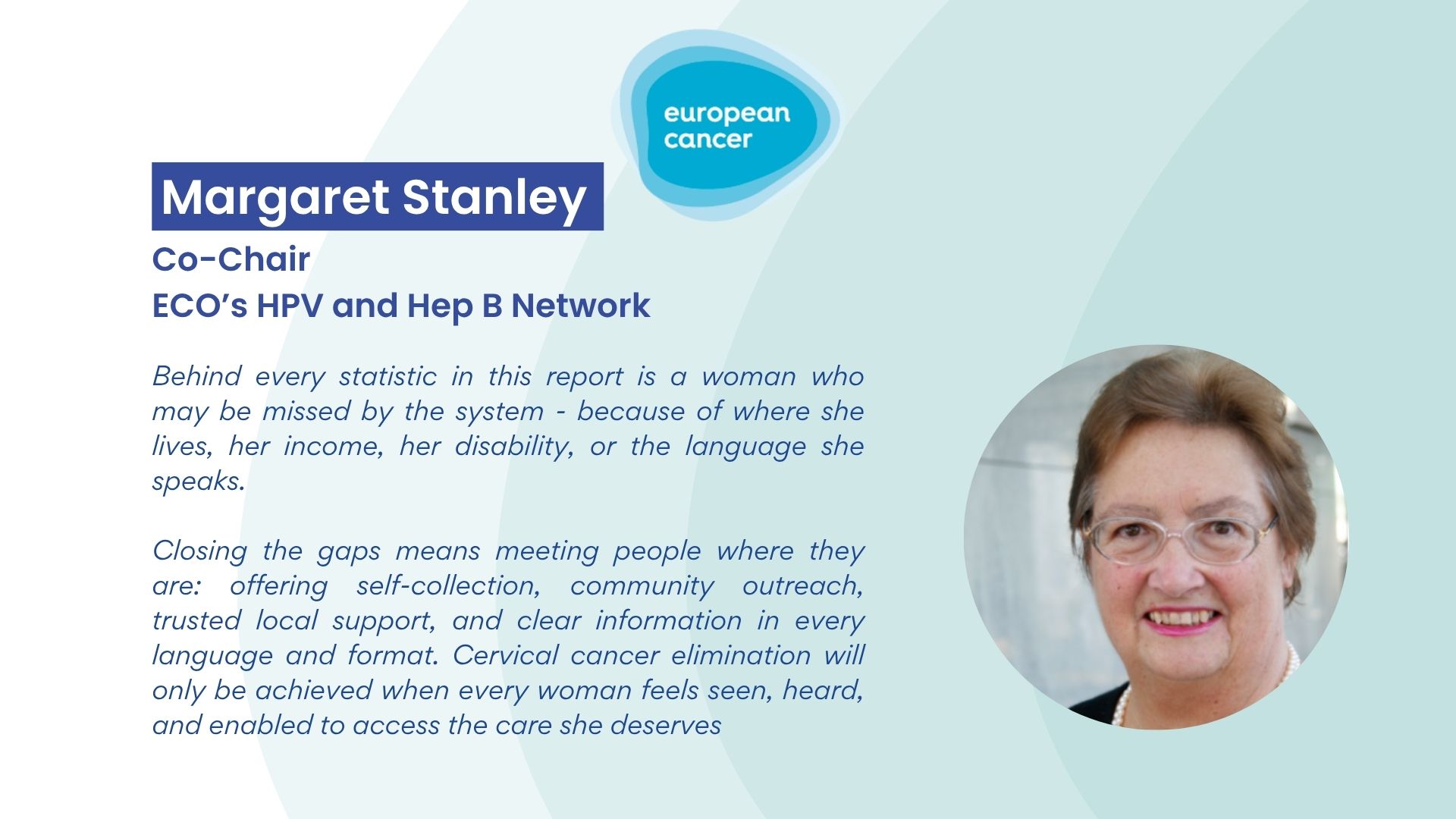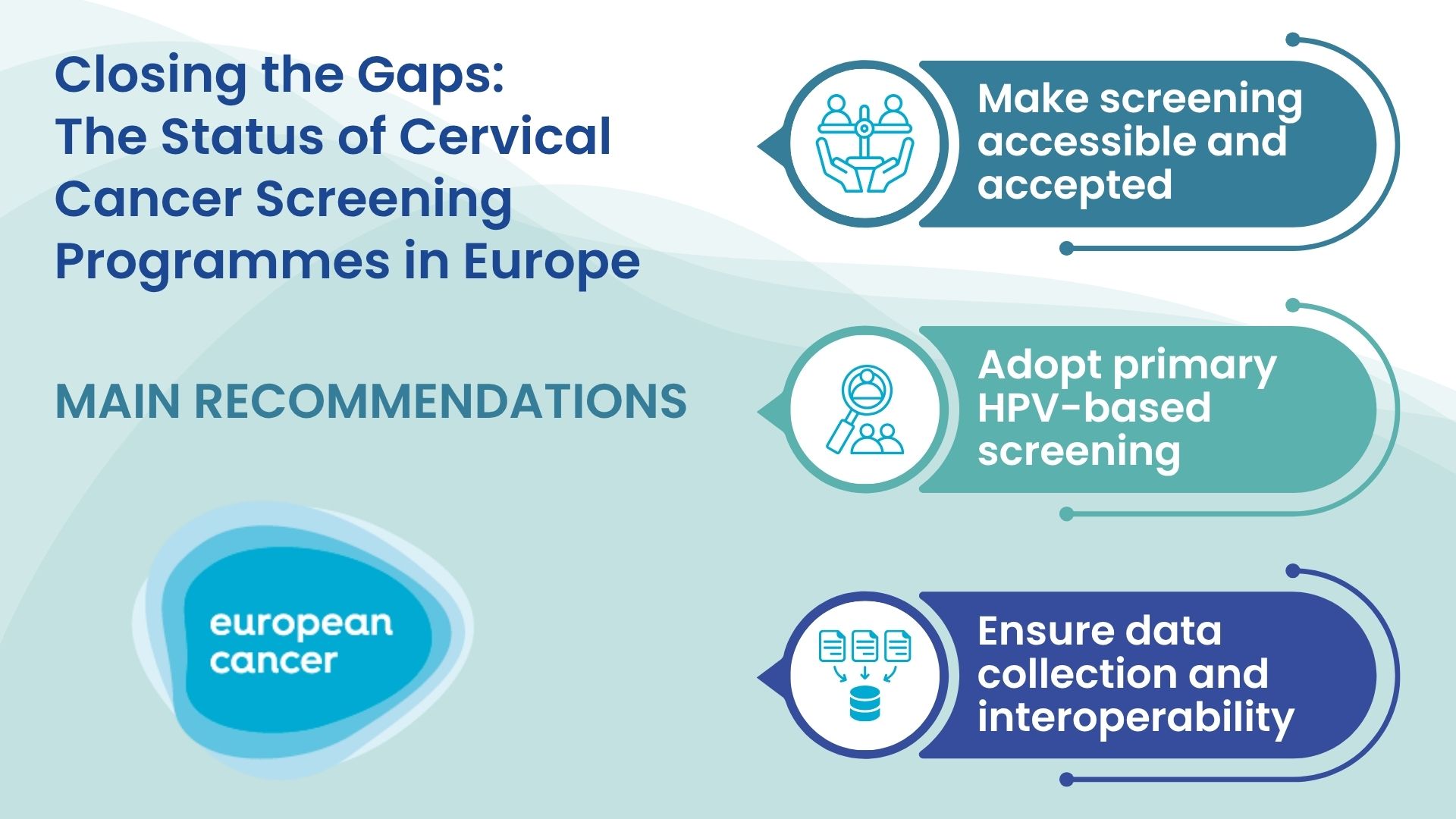Closing the Gaps: A New ECO Report Sheds Light on the Status of HPV Screening Programmes in Europe
A new report from the European Cancer Organisation (ECO) and its HPV and Hep B Action Network highlights persistent inequalities in cervical cancer screening and HPV testing across Europe. It calls for stronger implementation of EU recommendations, greater coordination among European countries, and more cohesion in vaccination and screening programmes.

Closing the Gaps: The Status of Cervical Cancer Screening Programmes in Europe provides an updated overview of how European countries are progressing towards the elimination of cervical cancer, a goal set out in Europe’s Beating Cancer Plan and WHO strategy.
Despite major advances in prevention and technology, participation in cervical cancer screening still varies widely across Europe. The report identifies gaps between and within countries, particularly in Eastern and Southern Europe, and among women affected by income, geography, disability, ethnicity and digital exclusion.
Many countries have yet to transition from cytology (a Pap smear) to HPV-based testing – the method now recommended by the EU as the most effective approach. The report also stresses the need to better integrate HPV vaccination and screening, ensuring these tools are used together to accelerate progress towards the elimination of cervical cancer.


Why read this report?
Closing the Gaps is an essential resource for policymakers, public health experts, and cancer advocates working to improve early detection and prevention efforts in Europe. It provides a wide range of evidence and analysis.
- A detailed overview of the current landscape of cervical cancer screening programmes across European countries
- Comparative insights showing where progress has been made, and where inequalities remain, in implementing EU screening recommendations
- A policy analysis of different national health systems
- Evidence-based guidance for building effective screening pathways – including organised, population-based programmes and transitioning from cytology-based to HPV-based screening – plus lessons from early adopters
- Recommendations for integration between HPV vaccination and screening programmes, maximising prevention impact, efficiency and equity
- Country-level perspectives highlighting good practices, data gaps, and opportunities for improvement where action is most needed

By bringing together data, expert analysis, and policy recommendations, this paper provides a roadmap for equitable access to effective cervical cancer prevention for all women in Europe.
Download it here.


